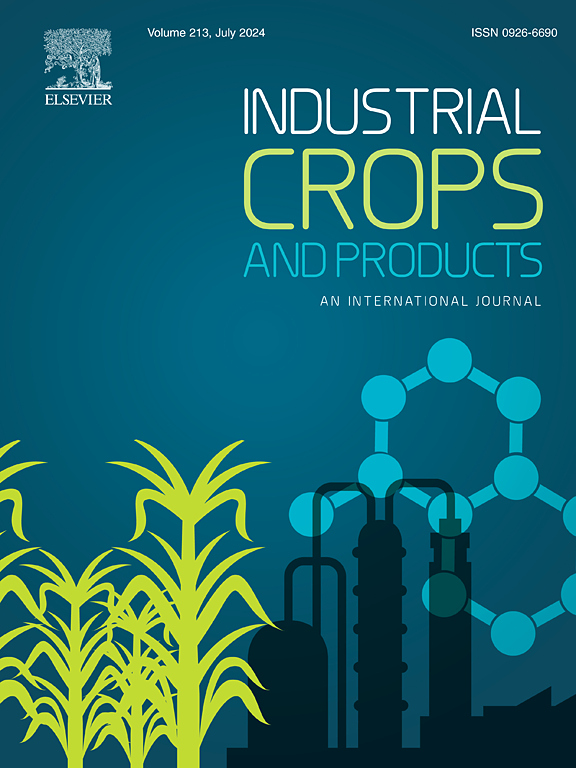NiCo2S4 nanosphere anchored on N, S co-doped activated carbon for high-performance asymmetric supercapacitors
IF 5.6
1区 农林科学
Q1 AGRICULTURAL ENGINEERING
引用次数: 0
Abstract
Throughout the evolution of supercapacitors, binary transition metal sulfides have been extensively researched for their potential as electrode materials. Here, NSAC-NiCo2S4 composites are prepared by in-situ growing NiCo2S4 nanosphere on N, S co-doped activated carbon (NSAC) using a simple solvothermal way. The optimized NSAC-NiCo2S4 composite inherits the NSAC’s huge specific surface area, hierarchical porous structure, and high electronic conductivity, along with the excellent capacitive performance of NiCo2S4. This combination effectively reduces contact resistance and enhances the transfer rate. Calculations based on the density functional theory further indicate that synergistic interactions between NiCo2S4 and NSAC in the composite lower the OH− adsorption energy and release more active electrons. This enhancement facilitates the electrochemical reaction kinetics in supercapacitors. The as-fabricated NSAC-NiCo2S4-2 electrode possesses a remarkable specific capacitance (762 F g−1) at 1 A g−1 and exhibits a minimal charge transfer resistance (0.28 Ω). Furthermore, an asymmetric supercapacitor (positive electrode: NSAC-NiCo2S4-2; negative electrode: NSAC), achieves an impressive energy density of 36.6 Wh kg−1 at a power density of 400.0 W kg−1. It also exhibits exceptional cycling stability, maintaining 86.2 % of its capacity after 10,000 cycles. These excellent results further highlight the great potential of the obtained NSAC-NiCo2S4 composites for use in energy reserve systems.

锚定在 N、S 共掺杂活性炭上的 NiCo2S4 纳米球用于高性能不对称超级电容器
在超级电容器的发展过程中,人们对二元过渡金属硫化物作为电极材料的潜力进行了广泛的研究。本文采用简单的溶热法,在 N、S 共掺杂活性炭(NSAC)上原位生长 NiCo2S4 纳米球,制备出 NSAC-NiCo2S4 复合材料。优化后的 NSAC-NiCo2S4 复合材料继承了 NSAC 的巨大比表面积、分层多孔结构和高电子电导率,以及 NiCo2S4 的优异电容性能。这种组合有效地降低了接触电阻,提高了传输速率。基于密度泛函理论的计算进一步表明,复合材料中 NiCo2S4 和 NSAC 之间的协同作用降低了 OH- 吸附能,释放出更多的活性电子。这种增强作用促进了超级电容器中的电化学反应动力学。制备完成的 NSAC-NiCo2S4-2 电极在 1 A g-1 的条件下具有显著的比电容(762 F g-1),并表现出最小的电荷转移电阻(0.28 Ω)。此外,不对称超级电容器(正极:NSAC-NiCo2S4-2;负极:NSAC)在功率密度为 400.0 W kg-1 时,能量密度达到了惊人的 36.6 Wh kg-1。它还表现出卓越的循环稳定性,在循环 10,000 次后仍能保持 86.2% 的容量。这些优异的结果进一步凸显了所获得的 NSAC-NiCo2S4 复合材料在能源储备系统中的巨大应用潜力。
本文章由计算机程序翻译,如有差异,请以英文原文为准。
求助全文
约1分钟内获得全文
求助全文
来源期刊

Industrial Crops and Products
农林科学-农业工程
CiteScore
9.50
自引率
8.50%
发文量
1518
审稿时长
43 days
期刊介绍:
Industrial Crops and Products is an International Journal publishing academic and industrial research on industrial (defined as non-food/non-feed) crops and products. Papers concern both crop-oriented and bio-based materials from crops-oriented research, and should be of interest to an international audience, hypothesis driven, and where comparisons are made statistics performed.
 求助内容:
求助内容: 应助结果提醒方式:
应助结果提醒方式:


